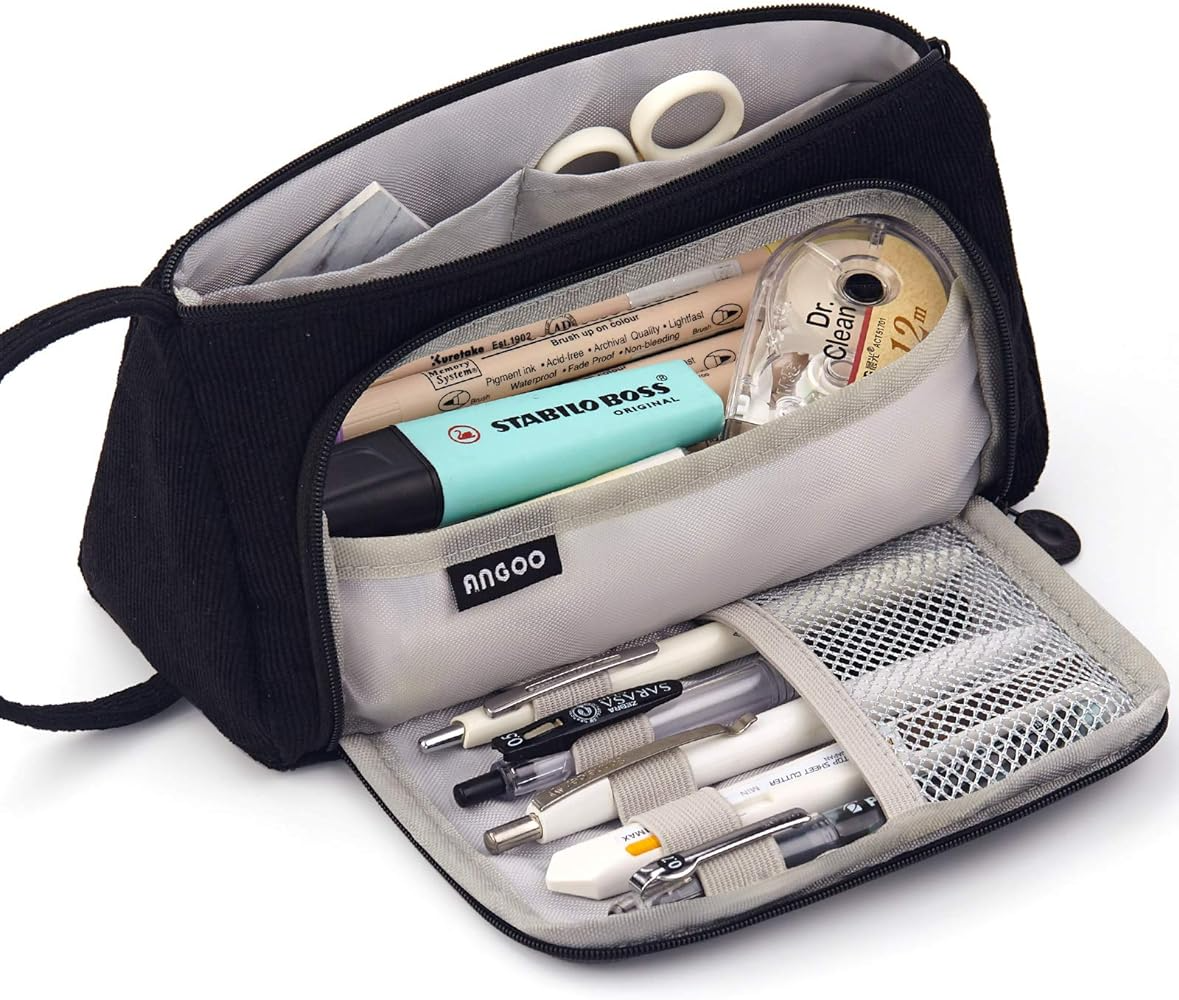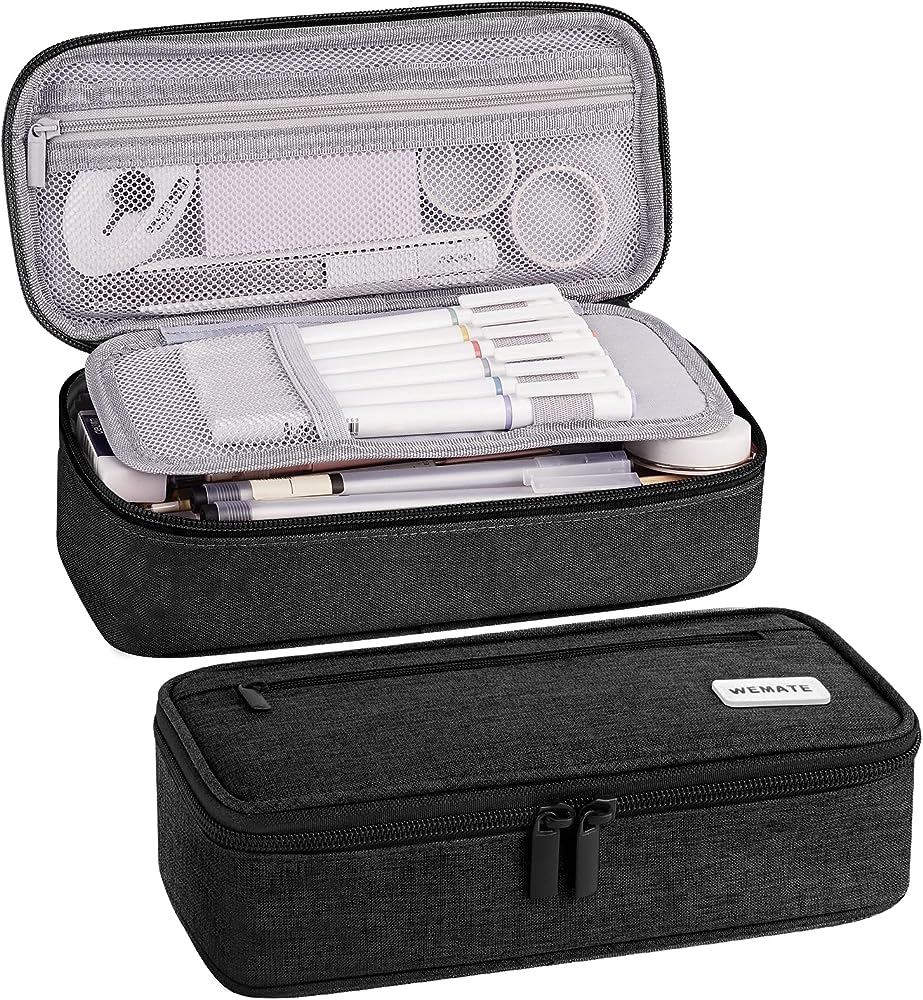Introduction of the pencil case
The pencil case, a seemingly humble accessory, holds a rich history and multifaceted significance in our daily lives. Serving as a vessel for organizing and protecting our writing implements, it embodies both functionality and personal expression. In this introduction, we’ll explore the evolution, design, and diverse applications of the pencil case, shedding light on its enduring relevance in a rapidly changing world.
Origins
The origins of the pencil case can be going to trace back to ancient civilizations, where scholars and scribes utilized various containers to store their writing tools. From the cylindrical cases of ancient Greece and Rome to the intricate pouches of medieval Europe, the need for portable storage solutions for pens, quills, and ink has been a constant throughout history.
Evolution
With the advent of mass production during the Industrial Revolution, the pencil case underwent significant evolution. What began as simple pouches or boxes made of leather or fabric transformed into a myriad of designs, reflecting changes in materials, manufacturing techniques, and user preferences. Today, pencil cases come in various shapes, sizes, and materials, catering to a diverse range of needs and aesthetic sensibilities.
Design
From classic pouches to zippered cases, roll-up pouches, standing organizers, and specialty designs for artists and professionals, the modern pencil case offers a wealth of options for organizing and safeguarding writing instruments and accessories. Whether compact and minimalist or elaborate and feature-rich, each design serves a specific purpose while allowing for personalization and self-expression.
Applications
Beyond its primary function of storing writing implements, the pencil case finds application in education, professional settings, travel, art, and emergencies. Its versatility makes it an indispensable accessory for students, professionals, artists, travelers, and anyone in need of portable organization and convenience.
In conclusion, the pencil case transcends its humble origins to become a symbol of practicality, organization, and personal style. As we navigate the complexities of modern life, it remains a steadfast companion, helping us stay organized, productive, and prepared for whatever challenges may arise.
A Brief History of the pencil case
The origins of the pencil case can be traced back to ancient civilizations where scribes and scholars utilized various containers to store their writing implements. In ancient Egypt, for example, papyrus scrolls were often accompanied by small containers to hold reed pens and ink. Similarly, in ancient Greece and Rome, scholars used cylindrical cases made of wood or metal to store their styluses and wax tablets.

The modern pencil case as we know it today emerged during the Industrial Revolution when mass production made writing instruments more accessible to the general public. Initially simple pouches or boxes made of leather or fabric, pencil cases evolved alongside advancements in materials and manufacturing techniques.
Evolution of Design of the pencil case
Over the years, pencil case design has undergone significant evolution, reflecting changes in fashion, technology, and user preferences. Traditional pouch-style cases have been joined by a myriad of innovative designs, each catering to specific needs and aesthetic sensibilities.
Classic Pouch
The classic pouch-style pencil case remains a popular choice for its simplicity and versatility. Made of durable fabric or leather, these cases feature a single compartment for storing pens, pencils, erasers, and other small items. They are compact, lightweight, and ideal for students and professionals alike.
Zippered Cases
Zippered pencil cases offer added security and organization with their zippered closures and multiple compartments. They come in various sizes and configurations, allowing users to segregate different types of writing instruments and accessories. Some zippered cases even feature additional pockets for storing USB drives, earphones, or other small gadgets.
Roll-up Cases
Roll-up pencil cases provide a unique blend of portability and accessibility. Typically made of canvas or synthetic materials, these cases feature individual slots or elastic loops for holding pens and pencils. They can be rolled up for compact storage and unfurled for easy access to contents, making them ideal for artists and travelers.
Standing Cases
Standing pencil cases, also known as desk organizers, are designed to stand upright on desks or tables, providing easy access to writing utensils while minimizing clutter. They often feature multiple compartments or tiers, allowing users to arrange their pens and pencils in an organized manner. Some standing cases even incorporate additional storage space for paper clips, sticky notes, and other desk essentials.
Specialty Cases
In addition to traditional designs, there is a wide range of specialty pencil cases tailored to specific hobbies or professions. Artists may opt for pencil cases with adjustable compartments or built-in brush holders, while engineers and architects may prefer cases with ruler slots and specialized pockets for technical pens and drafting tools.
Applications and Uses of the pencil case:
Pencil cases serve a myriad of purposes beyond storing writing instruments. Their versatility makes them indispensable accessories in various settings, including:
Education:
In educational settings, pencil cases help students keep their writing utensils organized and readily accessible. They prevent pens and pencils from rolling off desks or getting lost in backpacks, ensuring students can focus on their studies without disruptions.
Professional Settings
In the workplace, pencil cases play a crucial role in maintaining a tidy and efficient workspace. Professionals can keep their desk essentials neatly stored and easily accessible, minimizing clutter and maximizing productivity.
Travel
For travelers, pencil cases offer a convenient way to carry essential writing tools and accessories. Whether embarking on a business trip or a leisurely vacation, travelers can pack their pencil cases with pens, pencils, and other stationery items to jot down notes, sketch impressions, or complete crossword puzzles on the go.
Art and Creativity
Artists and designers rely on pencil cases to organize their extensive collection of drawing and coloring supplies. Whether working in a studio or en plein air, artists can neatly arrange their pencils, markers, and brushes in specialized cases designed to accommodate their creative needs.
Emergency Kits
Pencil cases can also double as emergency kits, containing essential items such as band-aids, safety pins, and medication. Compact and portable, they can be easily going to stash in backpacks, purses, or glove compartments for quick access during unexpected situations.
Conclusion
From humble beginnings to contemporary designs, pencil cases have evolved into indispensable accessories that cater to diverse needs and preferences. Whether used for education, work, travel, art, or emergencies, these versatile containers play a vital role in keeping our writing instruments organized and accessible. As we continue to embrace technological advancements and changing lifestyles, the pencil case remains a timeless staple in our daily lives.




